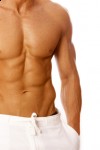 When we speak about using plants as medicine there are two very different and distinct methods, Western herbalism and Chinese herbal medicine. I find a lot of confusion between these two methods, so I've written a little background on each.
When we speak about using plants as medicine there are two very different and distinct methods, Western herbalism and Chinese herbal medicine. I find a lot of confusion between these two methods, so I've written a little background on each. One herb, two herbs, red herbs, blue herbs…. What’s the difference?
 When we speak about using plants as medicine there are two very different and distinct methods, Western herbalism and Chinese herbal medicine. I find a lot of confusion between these two methods, so I've written a little background on each.
When we speak about using plants as medicine there are two very different and distinct methods, Western herbalism and Chinese herbal medicine. I find a lot of confusion between these two methods, so I've written a little background on each. 






